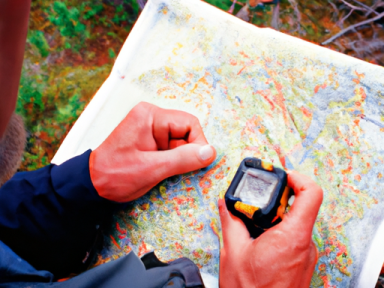The Importance of Advanced Navigation Techniques in Survival Situations
In a world where technology is becoming increasingly pervasive, it’s easy to rely on GPS devices and smartphones for navigation. However, in survival situations, these technologies may not always be available or reliable. That’s why it’s crucial to develop advanced navigation techniques that go beyond simply following a GPS route.
1. Celestial Navigation
One of the oldest and most reliable methods of navigation is by using celestial bodies as your guide. Knowing how to navigate by the stars, moon, and sun can help you find your bearings and determine your direction even when all other methods fail. Understanding celestial navigation requires a basic knowledge of astronomy and the ability to interpret star charts.
To use celestial bodies for navigation:
- Learn to identify key constellations, such as the Big Dipper and Orion, which can serve as anchor points in the night sky.
- Understand the concept of the North Star (Polaris) and its location in relation to your current latitude. The North Star can help you determine true north.
- Depending on the time of day, use the sun’s position to estimate your direction. For example, in the Northern Hemisphere, the sun rises in the east and sets in the west.
- Using a sextant or other navigational tools, measure the angle between the horizon and celestial object to determine your latitude.
2. Topographical Map Reading
Another essential skill for advanced navigation is the ability to read and interpret topographical maps. These maps provide detailed information about the terrain, including elevation, natural features, and man-made structures. By understanding how to read a topographical map, you can plan routes, identify potential hazards, and navigate through unfamiliar territories.
Key tips for topographical map reading:
- Familiarize yourself with the legend and symbols used on the map. This will help you understand the different terrain features and landmarks.
- Identify contour lines, which indicate changes in elevation. Contour lines that are closely spaced together indicate steep slopes, while widely spaced contour lines indicate flatter terrain.
- Use a compass in conjunction with the map to determine your current location and direction of travel.
- Take note of prominent landmarks in the area and compare them with what you see in reality to confirm your location.
3. Natural Navigation Cues
When all else fails, nature itself can provide valuable navigation cues. By observing your surroundings and paying attention to natural elements, you can find your way even without the aid of modern technology.
Here are a few natural navigation cues to keep in mind:
- Moss tends to grow on the north side of trees and rocks. Although this isn’t always accurate, it can provide a general indication of direction.
- Pay attention to the flow of water. In the Northern Hemisphere, water generally flows from higher ground to lower ground, which can help you determine the direction downstream.
- Study the behavior of animals. Birds often migrate in specific compass directions, and their flight patterns can provide insight into prevailing winds and directions.
- Learn to read the weather by observing cloud formations, wind patterns, and the movement of the sun. Changes in weather can affect your ability to navigate effectively.
In Conclusion
While technology has made navigation more convenient, it’s vital for survivalists and homesteaders to have a backup plan. Advanced navigation techniques using celestial bodies, topographical maps, and natural cues can provide crucial information in times of crisis. By developing these skills and practicing them regularly, you can navigate with confidence even when technology fails, ensuring your safety and survival.




GIPHY App Key not set. Please check settings